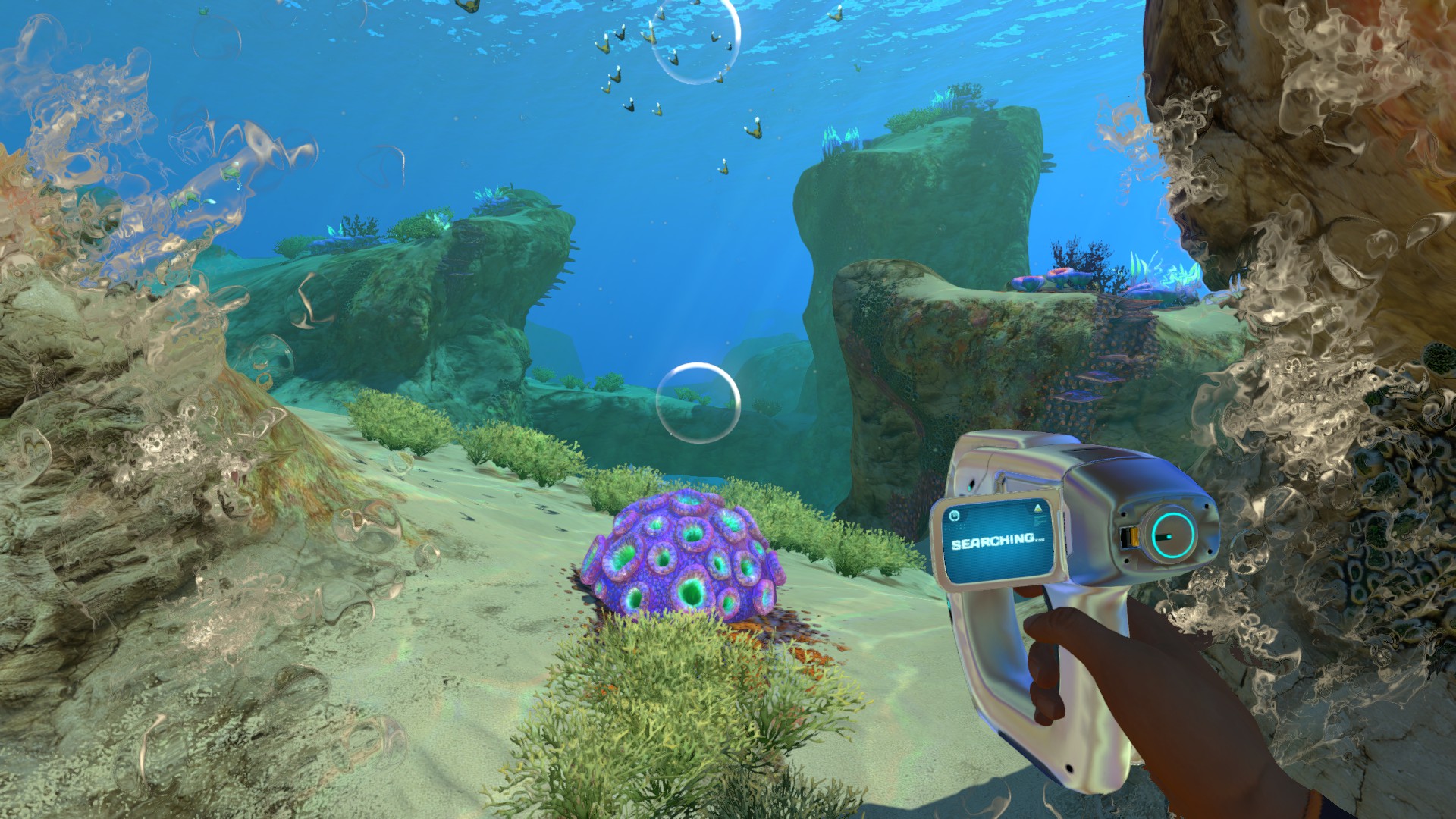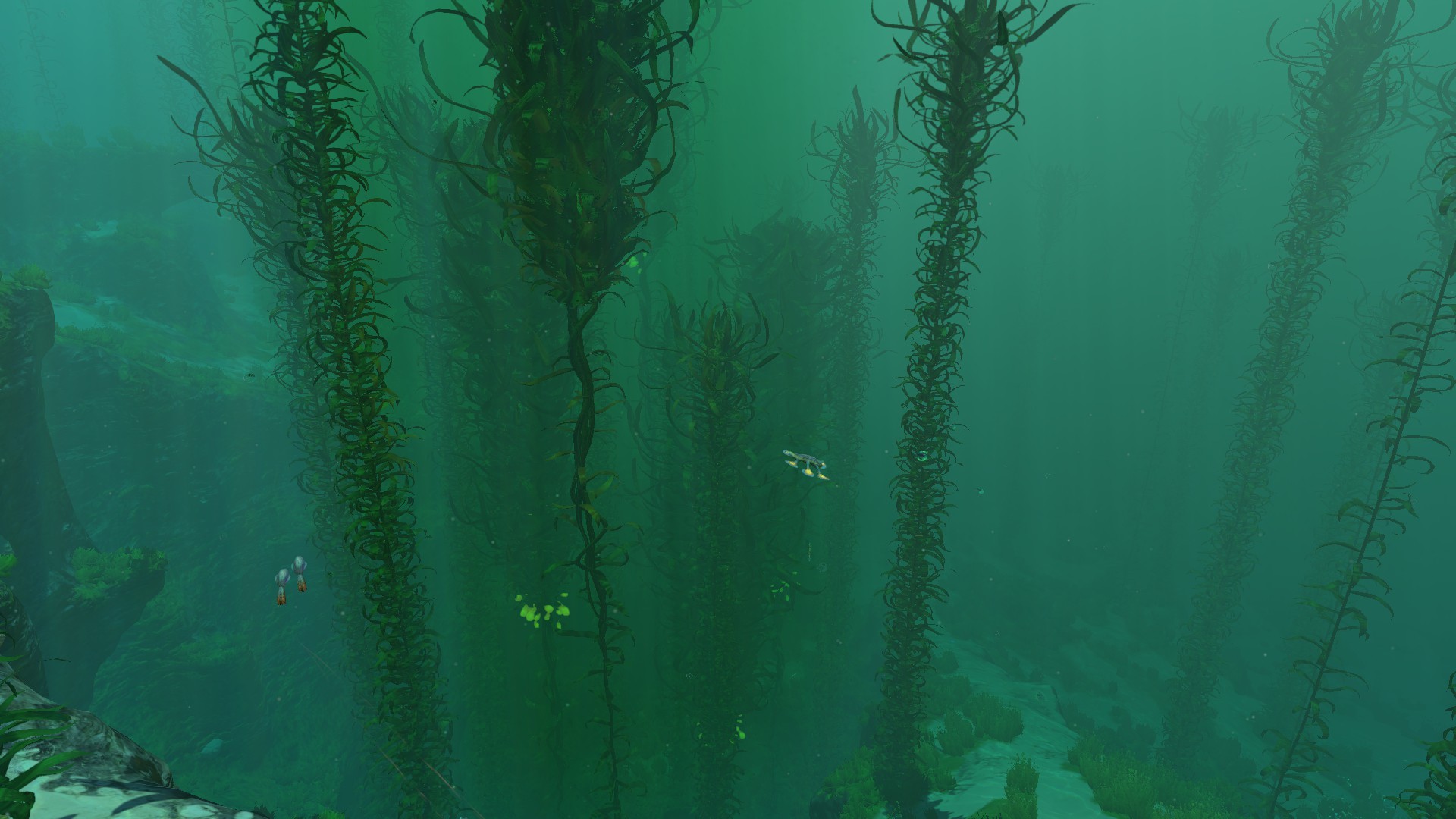Space, the final frontier. A sudden malfunction means that your rocket is careering straight for an uncharted ocean. You awaken in a tarnished escape pod, with nothing but a swimsuit and a few limited supplies to your name. Alone, castaway and on the verge of death, you are forced to venture out into the unknown, with no idea what awaits you in the briny deep. By Jordan Oloman
As a student archaeologist and avid gamer, I have an inherent love of adventure and discovery. Subnautica is an open world deep sea exploration game from the team behind the much praised Natural Selection 2, and I feel like it’s been made just for me.
From an archaeological perspective Subnautica is rich. It is an anomaly, an unknown world, and you have the privilege to discover and excavate at your leisure. You are fortunate enough to be the first person to do so as well. This game oozes wanderlust, and combines it with just the right amount of lingering terror that comes with the nature of uncultivated exploration. What it certainly has done is sate my hunger for No Man’s Sky, which similarly, sets to drop you in unexplored environments and let you roam free and discover animals, plants and a world previously untouched. In comparison to No Man’s Sky’s 8 quintillion planets, Subnautica may appear small-scale, but what it lacks in variation it makes up for in its abundance of honed features, and there is only more content to come!
Subnautica is a game that is primarily focused on survival, and before the worrisome hit or miss range of games like ARK: Survival Evolved and Rust spring into your head and fill you with doubt, I’d like to tell you that this one is the diamond in the rough. First off though, I think it’s key to note that this game is merely in early access, but the game is so immersive you really couldn’t tell. There are a whole host of features at play here, and it has way more content than your typical beta build cash in.
My favourite aspect of this game has to be the way it creates terrifying atmosphere. Subnautica is a tremendously uneasy game, an experience that casts a thick fog of malaise and promises to make you shiver. At the start, when you ultimately have nothing but your wits about you, exploring is a nervous task. My first few adventures involved collecting various seafloor fungi and avoiding everything that moves.
There is no database to tell you which of the creatures you encounter are hostile, and this job falls to you when you eventually are able to craft a scanner, so you can log the various creatures you find and work out their kinks, cross-referencing their attributes to find out if they’d be a key component in your next gadget.

The environment design in this game is truly special. It is a static world, but it’s an incredibly endearing one. You will find yourself anxiously perusing dark coves and drifting through coral tubes to find claustrophobic resource hubs, or, if you’re not so lucky, a Leviathan. As per the survival genre, the game has you constantly looking after your thirst, hunger and health. As much as I’d love to be a complete pacifist and just work on charting every corner of the sea, you must eat and drink, and that forces you to engage the creatures. Some are neutral and will let you pluck them straight from their habitat, but there are some more resourceful, dangerous critters that might take a variety of gadgets and equipment to capture.
Subnautica’s world is divided into distinct biomes, and certain pockets of the map will yield more dangerous creatures, as well as a bounty of crucial resources that you’re going to need if you plan to brave the elements. The first main area is a sky blue aquarium of mainly harmless creatures, but if you cast your eyes to the side the game consistently reminds you of your radius to a sickly green biome, full of stringy, obtrusive vines and a smattering of thin, crocodile-jawed beasts that weave in and out of the environment with a veil of stealth. The lonely, sparsely littered oceanic setting is enough to give any agoraphobe nightmares.

As a person who hates cheap scares and is dismissive of the way we now brand games as ‘horror’ dependent on how much it makes “insert famous game YouTuber here” scream, Subnautica is a serious breath of fresh air. It doesn’t need to jump scare you or chase you with an axe, it just provides you with a sandbox, and you can explore it at your own peril. A clever way the developers subvert this is by making a key component of the survival knife (your only form of defence in the early game) come from the seed cluster of those nefarious vines I mentioned earlier. To progress, and eventually defend yourself, you have no choice but to put yourself at risk. It is thoughtful nuggets of game design like this one that make Subnautica quite different from anything I’ve played this year, and is probably what will keep me hooked on it for weeks to come.
This colourful and insightful post was written as a guest post by archaeology student Jordan Oloman of Newcastle University. If you are also interested in writing a guest post for VALUE, feel free to contact us via mail.
